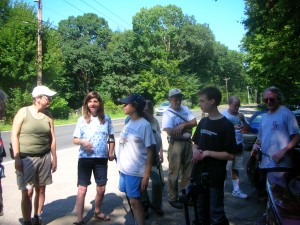Support Black Box Voting's Anti-Trust Suit Against Diebold/ES&S Merger
Remember all the election irregularities with paperless voting machines? Now the two largest players (both with strong conservative ties) are planning a merger. This could be a real disaster for free and fair elections in the U.S.
Black Box Voting has been leading the charge for fair elections since at least the 2000 debacle. I’m not in the habit of doing this, but I’m posting the entire announcement (including the call for financial support).
—– Forwarded Message —-
From: Bev Harris
Sent: Thursday, September 3, 2009 11:41:42 AM
Subject: BlackBoxVoting to file AntiTrust complaint re: ES&S/Diebold(Premier) mergerDiebold/Premier Election Systems is being purchased by Election Systems & Software (ES&S). According to a Black Box Voting source within the companies, there will be a conference call among key people at the companies within the next couple hours. An ES&S/Diebold-Premier acquisition would consolidate most U.S. voting under one privately held manufacturer. And it’s not just the concealed vote-counting; these companies now also produce polling place check-in software (electronic pollbooks), voter registration software and vote-by-mail authentication software.
You can discuss this here:
https://www.bbvforums.org/forums/messages/8/80622.html
(If not registered or need to re-register because forgot your old login info, you can do that here:
https://www.bbvforums.org/cgi-bin/forums/board-profile.cgi?action=register )ES&S attempted to consolidate the electronic voting industry in 1997 with a purchase of Business Records Corporation (BRC), but the purchase was blocked by the US Security and Exchange Commission on antitrust grounds, and the acquisition of BRC was split between ES&S and Sequoia Voting Systems.
Here is a press release from Diebold/Premier confirming the acquisition:
https://www.premierelections.com/news_room/press_releases/ESS%20Premier%20Release%20FINAL%20CLEAN%209.02.09%204%20PM.PDFWe will post the Black Box Voting complaint to the SEC at https://www.blackboxvoting.org later today.
If you believe Black Box Voting is doing important work, please consider generous support. We are going into what promises to be a brutal 2010 battle for control of the U.S. Congress, and pieces are being put in play RIGHT NOW to attempt to tip the scales.
You can become a patron with monthly subscription support in any amount you choose, or do a one-time donation, here:
https://www.blackboxvoting.org/donate.html
or mail to:
Black Box Voting
330 SW 43rd St Suite K
PMB 547
Renton WA 98057


 [/caption]
[/caption]